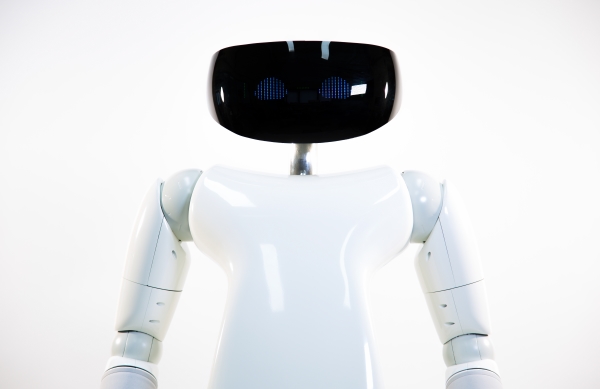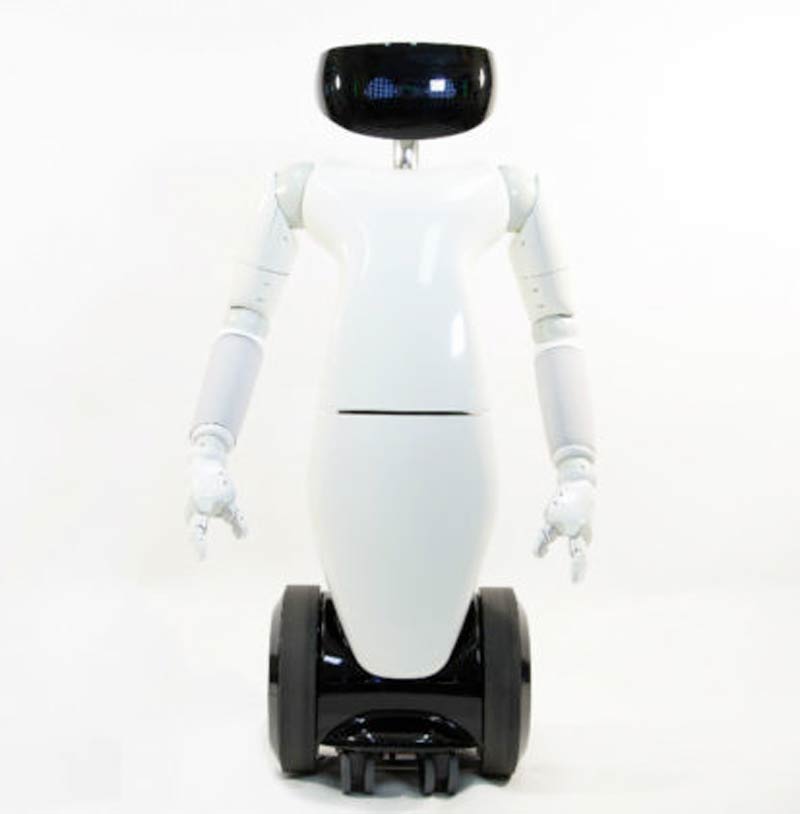In common parlance, a robot’s artificial device that performs certain actions based on commands that are given and its functions, is the basis of a direct human supervision, either independently based on general guidelines, perhaps using artificial intelligence processes; typically these tasks should be performed in order to replace or assist the man, eg. in the manufacture, construction, handling of heavy and hazardous materials, or in harsh environments or incompatible with the human condition or simply to free man from commitments.
the Genoa, addresses the general aspects of Robotics with an approach program Robotics of ‘ Italian Institute of Technology (IIT) engineering (mainly in electronics and mechanics) integrated with other disciplines such as neuroscience, physiology, psychology, mathematics, physics, chemistry and life sciences. This multidisciplinary research approach constitutes one of the great opportunities and challenges for robotics to study and evolve the concept of robots inspired by nature and man-machine interaction.
All ‘ inside the Robotics program identifies four main platforms:
iCub – the robot puppy used for the study of ‘ cognitive aspect
HyQ – the quadruped robot to assist humans in situations of risk
Walkman and Coman – developed robots to replace humans in dangerous and natural disaster scenarios
Plantoid – the first robot in the world inspired to plants with applications in the exploration of the subsoil and the environmental cleanup
Here’s how the robot R1
new with an extendable torso humanoid robot dell’IIT- Italian Institute of Technology is called R1 “your Personal humanoid” , has a height varying from 1 meter and 25 to 1 meter and 40 centimeters and is made for the 50% of plastic and for the other 50% of carbon fiber and metal, it weighs about 50 pounds, has 28 motors for movements: 2 for the head and neck, 4 for the torso, 8 for each arm , 2 for each hand, 1 for each of the wheels 2, communicates verbally with no visible expressions on the face, consists of a color LED screen, where the sensors are housed for the vision, balance, the generation and the perception of sound .
In the belly, on the other hand, there is the control unit. His arms can be extended by 13 cm forward to reach distant objects and torso, as well as move up and down, can also be twisted sideways. The movement is ensured by a battery for about 3 hours and, when downloading, simply plug into your home electrical outlet using a power supply like any household appliance. To move using the wheels with which reaches a speed of 2 km / h.
A wireless card then allows him to connect to the Internet, obtaining useful information to its interaction with people or upgrades of its software. The hands and forearms, thanks to which it can perform simple domestic operations by lifting weights up to 1.5 kg and fully closing the grip around cylindrical objects like bottles and cups, are covered with an artificial leather, a sensor that gives the robot the sense of touch allowing him to interact with the objects they manipulate. will cost initially as a small car, and in the future, as a product on the market, a few thousand euro.
In the next 12-18 months will be implemented the model of production and marketing of large scale with the involvement of private investors. “ For the first 100 prototypes we have identified a target price which is around 25 thousand euro. Beyond this threshold, the price will start to fall and will continue to decline as they become a consumer product. The band, more or less final, the price will be EUR 3 thousand, since the cost of a modern plasma TV “- says Giorgio Metta
a 1 – “your Personal humanoid” has been made, starting from the experience gained by IIT of iCub, the humanoid robot for more widespread research in the world. R1 is also humanoid and has elements of uniqueness:
- its Artificial Intelligence (AI) is designed and developed directly sull’umanoide. Most AI studies are conducted regardless of the existence of a robotic body, while on the contrary, the latest studies on neuroscience say that intelligence is developed in a functional manner to the body that houses it;
- has a newly designed body, which are currently used by 50% of plastic structure. Future versions will incorporate smart materials, such as graphene-based, or biodegradable, more sophisticated sensors, more efficient batteries and circuits embedded in the very structure of the robot.
R1 has been achieved in just 16 months with the help of a team of 22 scientists and technicians led by IIT Giorgio Metta , some of the Genoese industrial designers, and a group of industrial & amp; graphic designers, illustrators, and entertainment experts coming from two different creative realities: one in Milan who coordinated the development of the creative concept, the identification of interaction scenarios and coordinated market by Andrea Pagnin and Luigi Focanti for 6.14 Creative Licensing , and the other of Barcelona coordinated by Pierpaolo Congiu Drop Innovation , who has collaborated with the Milanese reality for the realization of the design of humanoid surfaces.
The team that created the robot R1

Coordinator and creator: Giorgio Metta, 46
Mechanical: Alberto Parmiggiani, 34 years (team leader); Luca Fiorio, 32 years; Anand Vazhapilli Sureshbabu, 28 years; Lorenzo Orciari, 34 years; Philip Biggi, 43; Andrea Della Patria, 43 years; Jennifer Chang, 22 years.
Electronic: Marco Maggiali, 36 years (team leader); Simeon Dussoni, 39 years; Andrea Mura, 40; Giorgio Zini, 57; Claudio Lorini, 47; Francesco Diotalevi, 46.
Software: Lorenzo Christmas 41 years (team leader), Alessandro Scalzo 46 years; Ugo Pattacini 39 years; Marco Randazzo 35, Daniel Domenichelli, 37; Alberto Goldfinch, 34 years; David Pollarolo, 27 years; Matthew Brunettini 41 years.
Strategic and Creative Concept: Andrea Pagnin, 44 (team leader) and Luigi Focanti, 44 (Creative Director)
Concept development and industrial design: Pierpaolo Congiu 40, (Industrial design Director)

No comments:
Post a Comment